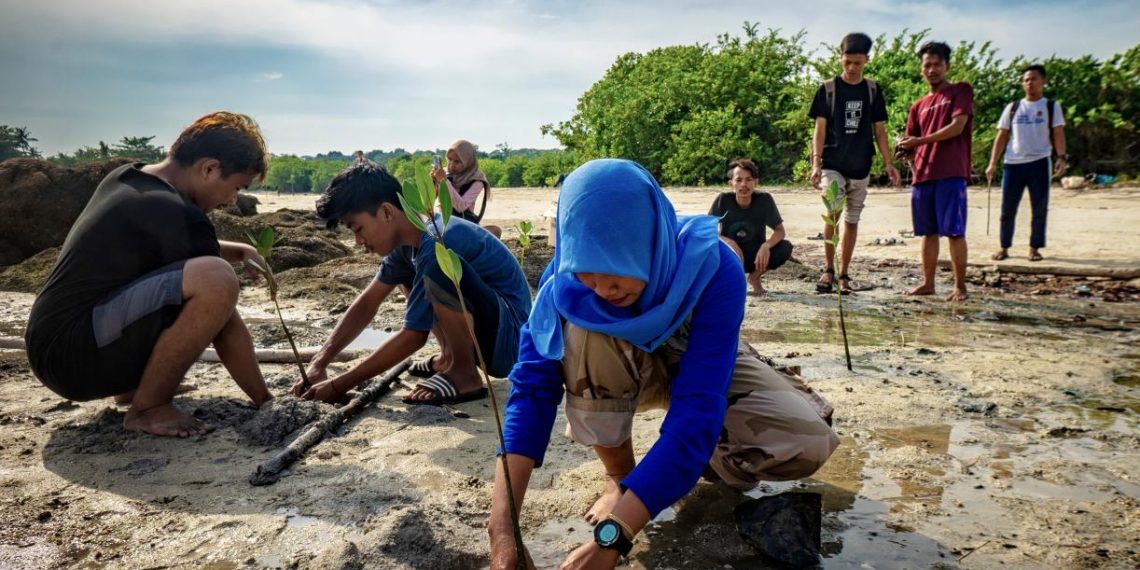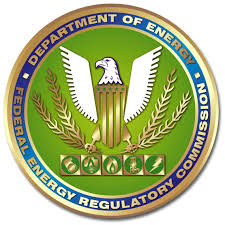If we are to prevent the most dangerous impacts of climate change, the world must make massive emissions cuts in coming years while also bolstering the ability of communities and ecosystems to adapt. But how will we know if we’re making sufficient progress or falling short? And how will we know where we should head?
This is where the Global Stocktake of the Paris Agreement comes in.
The Paris Agreement’s Global Stocktake is a two-year process that assesses the global response to the climate crisis. It aims to answer three vital questions:
- Where are we?
- Where do we want to go?
- And critically important, how do we get there?
By gathering information and data on implementation of the Paris Agreement, it evaluates progress on the world’s efforts to: slash greenhouse gas emissions enough to limit global temperature rise to well below 2 degrees C (3.6 degrees F) and ideally 1.5 degrees C (2.7 degrees F); build resilience to climate impacts; and align financial support with the scale and scope needed to tackle the climate crisis.
But the Global Stocktake process shouldn’t end with an assessment — it should also look ahead. It is designed to inform countries in updating and enhancing their climate actions and support, including through their national climate commitments, known as NDCs, and to enhance international cooperation for climate action. Its outcomes will provide countries and stakeholders with valuable information on the remaining gaps and opportunities to bridge them to reach the goals of the Paris Agreement.
The process kicked off in 2021 at COP26 in Glasgow and will culminate in 2023 at COP28 in the United Arab Emirates.
Here’s what you should know about the Global Stocktake:
What Is the Global Stocktake?
Established under Article 14 of the Paris Agreement, the Global Stocktake is designed to “to assess the collective progress towards achieving the purpose of [the Paris] Agreement and its long-term goals.” In other words, the Global Stocktake will evaluate progress at the global level — not the individual country level — and identify overall trends that should inform countries’ national climate commitments (NDCs), which are required to be updated at least every five years. That means that the current Global Stocktake will inform NDCs to be brought forward in 2025.
What Is the Purpose of the Global Stocktake?
The purpose of the Global Stocktake is not to create a single point of assessment or a snapshot in time, but rather a living tool that continually informs countries’ enhanced climate commitments on issues related to mitigation, adaptation and finance, as well as cross-cutting issues of equity.
Given that, the Global Stocktake should not be limited to informing NDCs but should expand its purview to influence broader climate action outside of the UN process. If undertaken effectively, the Global Stocktake can provide the scientific basis that guides countries and non-state actors’ climate policy and investment decisions.
Which Aspects of Climate Action Does the Global Stocktake Assess?
As part of the outcomes of COP24 in Katowice, Poland in 2018, countries agreed that the Global Stocktake would facilitate the assessment of global collective progress on three thematic areas: mitigation, adaptation, and means of implementation and support.
- On mitigation, the Global Stocktake will assess what effect countries’ NDCs will have on global temperature and determine what additional cuts to global greenhouse gas emissions are necessary to meet the Paris Agreement’s long-term temperature goal of limiting warming to well below 2 degrees C (3.6 degrees F) and ideally 1.5 degrees C (2.7 degrees F).
- On adaptation, the Global Stocktake will assess progress toward enhancing countries’ collective capacity to address climate impacts, strengthen resilience and reduce vulnerability to climate change.
- And on means of implementation, including finance, technology and capacity-building, the Global Stocktake will assess progress toward making financial flows consistent with the cutting of GHG emissions and ensuring climate-resilient development. The Global Stocktake will also evaluate progress on the mobilization and provision of support, such as the climate finance wealthy nations grant or loan to developing countries.
At COP24, countries also agreed that the Global Stocktake should “take into account, as appropriate” efforts to minimize and address inevitable climate impacts that go beyond what people can adapt to, known as loss and damage. Addressing this issue involves supporting vulnerable communities and countries that lose homes and livelihoods to increasingly severe climate impacts.
For the current Global Stocktake process, this will mark the first-ever official assessment of loss and damage action under the United Nations Framework Convention on Climate Change (UNFCCC). This coincides with loss and damage’s emergence as a central component of UN climate negotiations. As we seek to mobilize finance to address loss and damage, such assessments could prove highly valuable by helping answer critical questions: What funding, if any, is currently available and actually being used? Where are the funds flowing and not flowing? Where have loss and damage finance efforts been successful and unsuccessful? And what additional finance is needed?
Countries also agreed the Global Stocktake should consider the unintended social and economic consequences from the implementation of climate action, known as response measures. For example, mitigation can pose challenges for countries and communities still dependent on fossil fuels and other emissions-intensive sectors. The Global Stocktake could help highlight opportunities for co-benefits from climate measures and showcase how they can reduce emissions while advancing a “just transition.”
Finally, the international community agreed that the Global Stocktake should be conducted “in light of equity and the best available science.” The GST must incorporate equity considerations across all its thematic areas in order to inform how countries can equitably tackle the climate crisis and achieve common goals.
What Does the Global Stocktake Process Look Like?
Set to conduct a new assessment every five years, the Global Stocktake is a participatory process that is intended to be open, inclusive and transparent. It consists of three main phases, taking place over the course of two years:
Phase 1: Information Collection and Synthesis
This first phase is currently underway. Inputs will come from the Secretariat of the UNFCCC and its constituted bodies and the Intergovernmental Panel on Climate Change (IPCC), with the aim of achieving balanced and comprehensive inputs across all thematic areas.
In addition to these inputs, Parties to the Paris Agreement, international organizations, and non-Party stakeholders, such as members of civil society or intergovernmental organizations, can submit information relevant to the different thematic areas outlined above. Under the first Global Stocktake, the submission period started at COP26 in Glasgow and will continue until the end of February 2023. The UNFCCC Secretariat will compile these inputs to inform the Technical Assessment (Phase 2) of the Global Stocktake.
Phase 2: Technical Assessment
This phase starts after the launch of Phase 1, and partially overlaps with it, so that inputs can be received at various points during the technical assessment phase.
The technical assessment includes three dialogues, each held six months apart at intersessional negotiation meetings mid-year and at COPs. The first technical dialogue (TD1) was held at Bonn in June 2022 and will continue at COP27 in Sharm El Sheikh, Egypt in November 2022 and then at Bonn mid-2023.
The technical assessment phase is meant to assess the inputs collected during Phase 1 and identify the key takeaways that will inform the third and final phase of the Global Stocktake. To ensure the technical dialogue is conducted in an inclusive manner, it will convene Parties, experts and non-party stakeholders.
Upon conclusion of each technical dialogue, a summary report will capture the outputs of the discussions on the three thematic areas of the Global Stocktake, while also taking into account efforts related to response measures and loss and damage. After the third technical dialogue meeting, an overarching factual synthesis report will be prepared, highlighting the key findings from Phase 2 to help inform Phase 3.
Phase 3: Consideration of Outputs
The third and final step of the first Global Stocktake will occur at COP28 in the United Arab Emirates in 2023. Since the Global Stocktake is set to be completed every five years, this phase would occur again in 2028 and 2033, etc.
This phase is critical to ensuring impact. It will consist of high-level events where the findings from Phase 2 are discussed. This phase is meant to identify opportunities and challenges, as well as possible measures and best practices for climate action and international cooperation. Following these discussions, a summary of key political messages will be produced, which then can be referenced in a COP decision and/or a declaration. That final outcome will formalize the guidance countries adopt in order to inform their future climate action and support.
The guidance will provide context at the collective global level, and countries will need to take those outputs back to their national contexts to help address them. It will be up to national policymakers to use the outputs of the Global Stocktake to strengthen the implementation of their climate commitments and raise their ambition, including through NDCs and climate finance. It can also help spur greater international cooperation to bolster climate action. For developing countries, in many cases their action may be contingent on climate finance and support from developed countries.
How Can Civil Society and Non-state Actors Get Involved?
The Global Stocktake will be the first official check-up on the Paris Agreement, and its outcomes could boost critical opportunities for action on mitigation, adaptation, finance, loss and damage, and response measures. A key measure of success will be whether the Global Stocktake can spur impact on the ground at the local, national, regional and international levels.
Civil society and non-state actors can support an impactful first Global Stocktake by:
1. Holding events to discuss the implication of Global Stocktake outcomes at the local, sub-national, national, regional and international levels. This also includes encouraging widespread engagement in the Global Stocktake amongst non-state actors, policymakers and international organizations.
2. Advocating for a robust and impactful Global Stocktake outcome at COP28. The outcome should be politically relevant and not just an information-sharing exercise coupled with vague, unactionable recommendations. Instead, the GST should inspire countries to agree to new political commitments that deliver breakthrough solutions across sectors.
3. Working outside the formal Global Stocktake process to share best practices and support discussions on national or regional climate progress. These individual assessments cannot be included in the formal process, but are critical to supporting enhanced climate action on the ground.
Civil society and non-state actors can also take part in the formal process by providing inputs for Phase 1 by the end of February 2023, as well as supporting and encouraging countries in developing their inputs, including their participation in the technical dialogues. Non-state actors can also take part in the technical dialogues at COP27 and in Bonn in 2023, by invitation.
Using the Global Stocktake to Secure Stronger Climate Action
There is no doubt that the Global Stocktake will be an essential tool to ensure that climate action effectively secures a safer, more prosperous future for all. It will also set the tone for action in the latter half of this critical decade and beyond. However, these outcomes will only be possible if all countries and non-state actors work together to ensure that the Global Stocktake is as impactful as possible.



